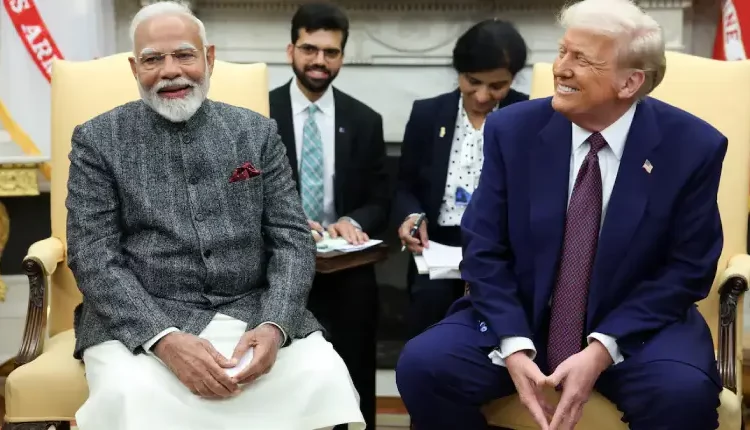New Delhi: United States President Donald Trump is all set to impose reciprocal tariffs on imports against countries, including India, from April 2, which have failed to provide the recently signed Trade Promotion Authority (TPA) bill, Treasury Secretary Steven Mnuchin said.
These tariffs are designed to counterbalance the tariffs other countries levy on U.S. products, a step Trump maintains would safeguard the United States economy from the impact of unfair foreign competition and lessen its trade deficit. In case any country thought it could escape the tariffs by not having a large trade imbalance with the U.S., Trump clarified that these new measures will apply to all countries.India is one of the countries expected to be impacted.
The White House noted that India imposes a steep 100 per cent tariff on various U.S. agricultural products, a point made by Press Secretary Karoline Leavitt in a statement on Tuesday. Trump contends that this imbalance has harmed the U.S. for years and that his new policy will make trade fairer and bolster America’s economic position.
At the same time, Kevin Hassett, the director of Trump’s National Economic Council, stated on CNBC that the U.S. is specifically targeting 10 to 15 countries that are driving its trade deficit. He didn’t identify them, but data from the Commerce Department in 2024 indicates that China was at the top of the list, followed by the European Union, Mexico, Vietnam, Ireland, Germany, Taiwan, Japan, South Korea, Canada, India, Thailand, Italy, Switzerland, Malaysia, Indonesia, France, Austria and Sweden.India has been trying to avert the fallout.
The country’s Commerce and Industry Minister came to the U.S. recently to discuss the question, and reports indicate that India is prepared to lower tariffs on $23 billion in American imports. Trump acknowledged this on Tuesday, expressing his knowledge of India’s intention to lower taxes on U.S. goods. He argues that his tariff push is already leading to policy changes in other countries.
Though he has taken steps in the past to alleviate tensions, like removing duties on certain items, it is unclear if he is pleased with India’s response.The tariffs may be painful for Indian industries. It could potentially lead to major losses in sectors such as pharmaceuticals, chemicals, textiles, garments, automotive parts, agriculture, engineering, and solar.
On generic drugs, India is a leading global exporter, and while the U.S. doesn’t currently impose any duty on imports from India, India levies about 10% on U.S. pharmaceutical products imported into its country. Under the reciprocal tariff plan, the U.S. would be able to impose a corresponding 10% duty, which could upend this major trade.As April 2 nears, the world pays close attention. For India, it’s a high-stakes moment to steer its way through this shift in American trade policy and protect its economic interests.



Comments are closed.